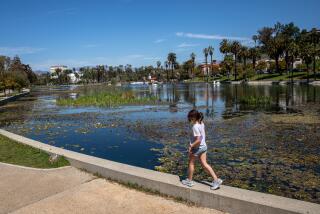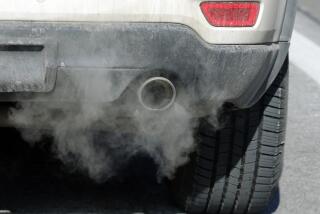Teledyne Ryan to Pay $48,000 Fine Over PCBs
Teledyne Ryan Aeronautical, accused by state officials of partial responsibility for high levels of suspected carcinogens in San Diego Bay, has agreed to pay a $48,000 federal fine for mishandling polychlorinated biphenyls (PCBs), federal officials said Tuesday.
Dan Schoenholz, an environmental protection specialist with the U.S. Environmental Protection Agency, said the San Diego-based defense contractor agreed late last month to pay the penalty and to take steps to comply with the federal law governing PCBs.
Schoenholz said the $48,000 fine was the largest imposed this year by the regional San Francisco office under the Toxic Substances Control Act. He said the largest penalty assessed in 1986 was about $50,000.
The penalty, agreed on by the company and the agency in settlement talks, stemmed from a September inspection of the Harbor Drive plant that EPA officials said revealed instances of improper use, storage and disposal of PCBs, and inadequate record-keeping.
High Levels in Lagoon
The inspection had been prompted by separate allegations by the staff of the Regional Water Quality Control Board, who accused Teledyne Ryan in July of discharging PCBs down storm drains that feed into San Diego Bay.
The PCB levels in the bay near the Teledyne Ryan plant have been described by state officials as among the highest ever found along the California coast. Though officials say there is no evidence of harm to human health, they have quarantined that area.
PCBs are man-made chlorinated hydrocarbons that were used for many years in transformers and capacitors. Production of PCBs was banned in 1978 in light of evidence that they cause cancer in animals and have harmful health effects on humans. They still exist, however, in pre-1978 equipment, including transformers and capacitors in use at Teledyne Ryan’s plant. They have also been used in equipment at other aeronautical firms nearby.
Teledyne Ryan officials have contested the state’s allegations, questioning both the sampling methods used and the conclusions drawn from the findings. They have suggested that Lindbergh Field and other facilities might be responsible for the PCBs in the bay.
However, they agreed to clean up PCBs found in their storm drains.
On Tuesday afternoon, no officials were available to comment on the EPA penalty, said Jack Broward, a company spokesman.
According to Schoenholz, the settlement requires that the company come into compliance with federal PCB regulations by:
- Cleaning up all transformers that were found to be leaking during the inspection.
- Showing what housekeeping steps are taken to insure that leaks don’t happen again.
- Insuring that all PCBs put in storage for disposal are properly disposed of within a year.
- Improving the forms used for keeping federally required records so they provide all the information required under the law.
Schoenholz said that the penalty was reduced from the $63,000 proposed by the EPA in its civil complaint in December after the company argued that EPA was unable to prove that the PCBs reached the storm drains after passage of the 1978 law regulating PCB handling.
“We charged them for illegal disposal of PCBs into the storm drains at the facility, and they argued that there was no evidence that disposal occurred after the PCB regulations were in effect,” Schoenholz said.
He said the EPA had “no compelling evidence” and therefore lowered the fine.
More to Read
Inside the business of entertainment
The Wide Shot brings you news, analysis and insights on everything from streaming wars to production — and what it all means for the future.
You may occasionally receive promotional content from the Los Angeles Times.










